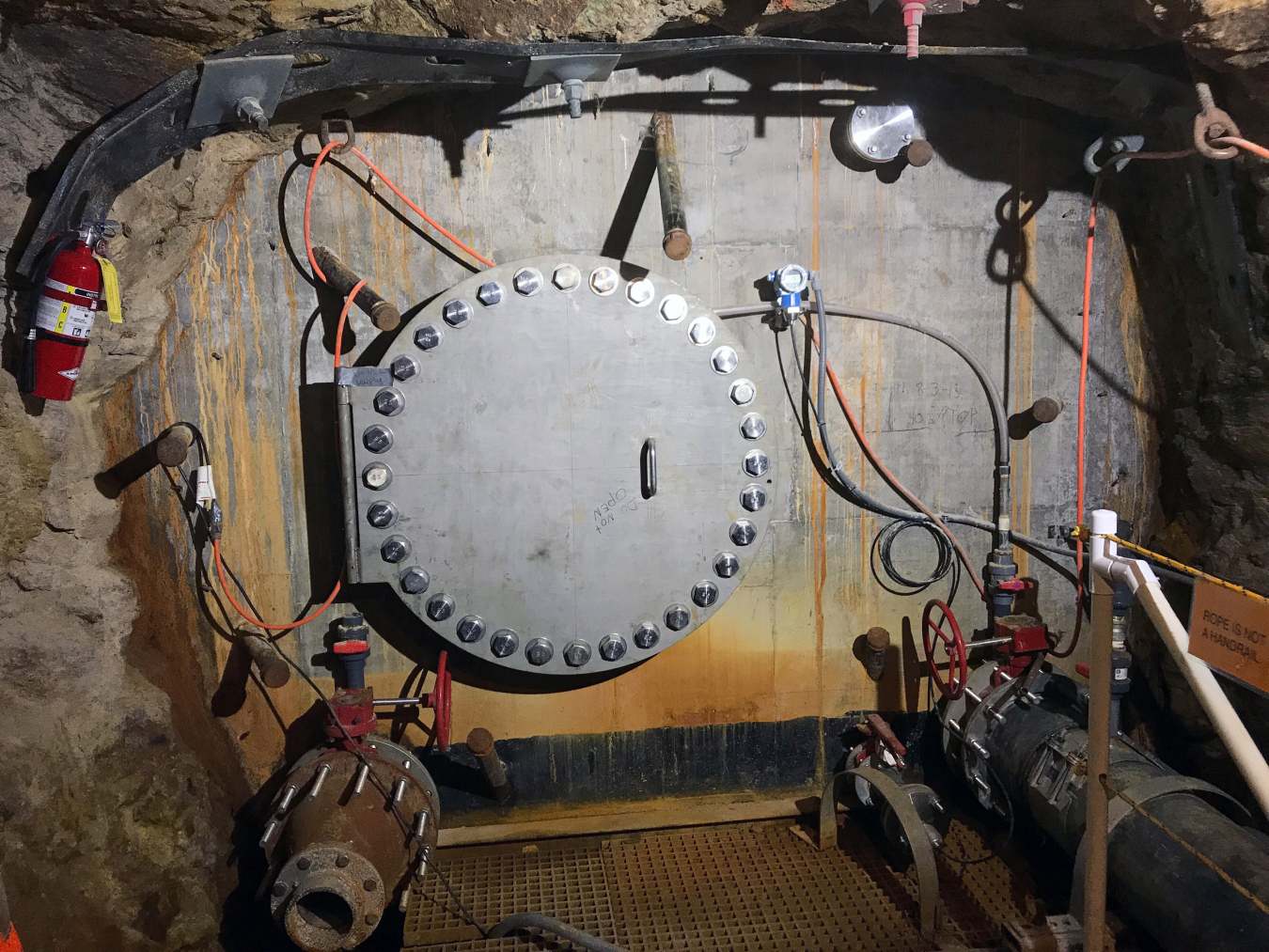The DOE Office of Legacy Management hosted the 2017 Abandoned Uranium Mines Working Group at its Westminster, Colorado, office.
December 28, 2017The U.S. Department of Energy (DOE) Office of Legacy Management hosted the 2017 Abandoned Uranium Mines Working Group (AUMWG) at its Westminster, Colorado, office on November 6 and 7, 2017. The AUMWG is a consortium of federal agencies, including the U.S. Department of Agriculture, DOE, U.S. Department of the Interior (DOI), and U.S. Environmental Protection Agency (EPA), working together to address the nation's 4,225 defense-related uranium mines. These mines produced uranium ore purchased by the U.S. Atomic Energy Commission, DOE’s predecessor agency, between 1947 and 1970 for defense-related purposes.
The AUMWG identifies public safety, human health, and environmental challenges posed by the mines while addressing those with the greatest risks. Senior leaders, managers and technical staff representing all agencies attended the annual meeting. The group evaluated its progress in implementing the second year of the AUMWG Strategy and Five-Year Action Plan, exchanged technical information and field approaches, and established 2018 program and field activities for each agency.
After the meeting, attendees toured the Edgar Mine in Idaho Springs, Colorado, to learn about historic mining practices and develop a better understanding of underground mine workings. They also toured the bulkhead and wastewater treatment plant at the nearby Argo Tunnel to observe and learn about technical approaches to managing and treating acid mine drainage. Representatives from the Colorado Division of Reclamation, Mining, and Safety; the Colorado School of Mines; and the Colorado Department of Public Health and Environment led the tours and shared their wealth of information and insight with the group.
The AUMWG is a model of the “one government” approach. Each agency, acting within its own authority and mission space, implements its work on the ground with the knowledge and coordination of the partner agencies in the working group. Work includes verification and validation of mines on federal public lands. This is being addressed collaboratively with DOE, the U.S. Bureau of Land Management (BLM), and the U.S. Forest Service (USFS) under the auspices of the Defense-Related Uranium Mines (DRUM) Program. Here, DOE, BLM, and USFS are verifying and validating the condition of DRUM sites on federal public land where approximately 2,500 mines are located. This land is often used for recreational purposes such as camping and four wheeling, and dangerous mine openings can be found next to roads. DOE, BLM, USFS, and state abandoned mine land programs are collaborating to perform field inventories of mine features, gamma radiation surveys, and environmental soil and water sampling at the mines.
By conducting these activities and identifying the mines that present public safety, radiological, and chemical risks, land management agencies and abandoned mine land programs can determine which mines to close and reclaim to protect the public. The EPA is also coordinating with DOI agencies and USFS to address abandoned uranium mines posing the greatest risks to human health and environment in the Grants Mineral Belt of New Mexico and on the Navajo Nation. These agencies are working with each other and with states and tribes to assess and clean up these abandoned mines. Approximately 11 percent of the 4,225 mines are on tribal lands and other areas where poverty, linguistic isolation, limited educational opportunities, and other factors contribute to increased vulnerability to pollution. Leveraging knowledge and resources to support each other’s efforts has proven useful for agencies addressing issues associated with abandoned uranium mines.
The AUMWG is now implementing the third year of the Five-Year Action Plan. Monthly teleconference calls are held to track program and field activity progress and to exchange best practices and lessons learned. Through multi-agency efforts, the AUMWG continues to identify available resources and expertise at the federal, state, and tribal levels. By marshalling the resources of multiple agencies and taking a one-government approach, the AUMWG is able to effectively identify and address high-priority mines in a cost-effective, coordinated, and well-managed fashion.



